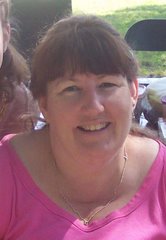Klown and I are taking a week-long trip to Colorado. We'd be taking an extra day or two, except we have to get back in town in time to see Ringling's tour of St. Louis. This year, we get the Blue Show, which is the experiment in "no ring." Two years ago when this show debuted there was a lot of discussion in the circus community about whether or not this was a good idea.
I have not seen it so I don't know. I'm sure I'll be sharing my comments here!
When I first started researching circus, one of the books I read was Water for Elephants. I highly recommend this book as a pretty accurate description of circus in the 1920's. The love story is sort of unnecessary, and a lot of the parts wrap up nice and neatly at the end when they really shouldn't have. But overall, the vision of circus portrayed is darned close to what it was like to travel on the big trains of the old days. In that book, they referred to Ringling as the "Big Bertha." I've seen that description made in other places, as well.
It shows just how big Ringling was in those early days. It is still big, much bigger than most other traveling shows. It is truly the only one of its kind any more. It must perform in huge arenas and has a support staff behind the scenes that can number in the hundreds. The only thing that might come close to it in size of support staff might be Cirque du Soleil, but the Cirque show can't compare in size of performance and performers. There really is nothing to compare to Big Bertha.
And in those old days, Big Bertha was something aspire to. Performers that ended up on Ringling gained a measure of unearned respect that couldn't be matched. Even today, to get on with Ringling is a great way to add to your resume.
I enjoy the Ringling shows. It's another side of circus.
Saturday, October 27, 2007
Big Bertha
Subscribe to:
Post Comments (Atom)



No comments:
Post a Comment